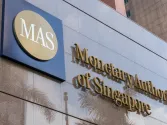Mark Billington: It's a risky business.
By Mark BillingtonThe last two years have been extraordinary by any standards. Established financial institutions have been swept away, amalgamated or nationalised in many countries across the world. Property bubbles have burst. Governments have been forced to step in to save entire industry sectors at a vast cost to the public. Government spending has also ended up in the limelight.
A key question emerging in the wake of the financial crisis is ‘how do you prevent the build up of risks from bringing down the financial system’? Though it seems obvious it is perhaps one that still may not be getting enough attention from policymakers. While there have been many headlines and contributions, they have failed to ask the most difficult question – how are the particular risks to be addressed?
The public debate first focused on who is given responsibility for financial stability, and what authority they have. This is an important question and the crisis has highlighted significant failings in this area, at both national and international levels. International bodies did not have formal mechanisms for co-ordinated action, while national regulators were unable, and possibly unwilling, to identify and address the build up of problems.
Policymakers have mooted breaking up some of the largest banks, separating the so-called ‘casino’ and ‘utility’ banking operations, counter-cyclical accounting/prudential regulation and controlling bank bonuses. Again, it is right that all these ideas are considered, but it is difficult to see that the crisis would not have happened had any, or all, of the proposed measures been in place. There may also have been unwanted and unintended consequences of their implementation, such as slowing economic growth, higher priced financial products for consumers or creating new and different bubbles.
The problem with focusing on the size of banks is that the bank's importance on a systematic level changes according to the economic. The crisis has highlighted this even when relatively small and simple banks needed to be bailed out to save the financial system. It could be that even in good times, the system may have had enough capacity to cope with the collapse of even a very large global bank – the shareholders may have lost on their investments but someone may have stepped in to pick up market share and thereby prevented market contagion.
What may be needed now is a focus on risks rather than institutions. The interconnectedness of the banking system, and its importance to the wider economy, creates systemic risk. Creating circuit-breakers to prevent onward transmission of problems will not be easy. However, the financial crisis was not caused by any one bank running into trouble, but by a build up of similar crises across the system that were not properly identified or addressed.
Regulators need better systems for measuring this type of risk concentration, and the tools to combat over-concentration. Higher capital may be needed, but this may be a more effective solution if these higher capital requirements are targeted at emerging bubbles, rather than on the size of the institution or the state of the economic cycle.
This needs public debate and political commitment, and the buy-in of both the industry and consumers of financial products, as the tools may involve acting against the tide of market sentiments. It will also need better information to allow risk concentrations to be identified – both Hong Kong and Singapore saw several examples of the mis-selling of financial products through at best opaque information, and at worst deliberate mis-information, as both vendor and investor were caught up in the frenzy caused by the fear of missing out.
While views may differ on precisely what must be done, there is little doubt that the crisis has provided an opportunity to learn important lessons and address shortcomings.
The ICAEW believes that new thinking is needed on managing systemic risk. The solution needs to be global or at least globally co-ordinated, as there is no doubt that the financial crisis has shown the interdependence and mutual interests of global markets, national economies and regulatory systems. Transparent financial information is the corner stone on which to build global risk management.
What we need are clear lines of regulatory responsibility for collecting and reporting information on systemic risk. At the level of individual financial institutions, focus should be on:
• improving the transparency of bank boards’ risk appetite and risk management;
• increasing clarity about how risk management information flows to bank boards;
• linking remuneration to long term, risk-adjusted performance and ethical behaviour;
• and working to improve systems of cross border regulatory cooperation.
Perhaps the reason for this issue not yet having been given sufficient attention is that no-one really knows how to solve the problem! Let’s hope 2010 will offer some answers.






















 Advertise
Advertise








